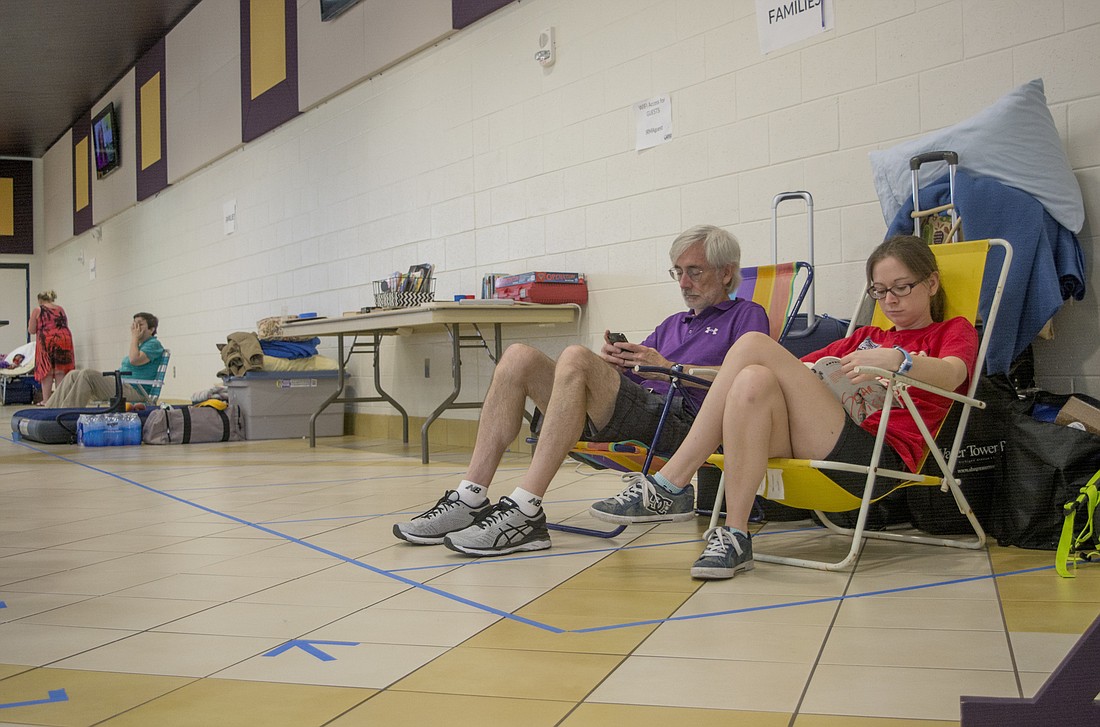- May 4, 2024
-
-
Loading

Loading

A conversation is taking place throughout Sarasota County about how to incorporate nonprofit groups into the county’s emergency-management plans.
With hurricane season two months away, Sarasota County is preparing and modifying its plans based on what it learned in 2017 with Hurricane Irma. The storm passed through Sarasota County weaker than was originally expected.
It was the first major storm to hit the area since 2004, when Hurricane Charley hit the south county area, and it revealed some weaknesses or areas to improve in the county’s plan.
“Every organization has different assets. [We need to] be sure those assets are available.”
After Irma, former head of the Federal Emergency Management Administration Craig Fugate came to the county to lead an after-action review, and noted the county should strengthen its relationships with nonprofits.
“I think it goes back to what Mr. Fugate said,” Sarasota County Emergency Services Director Rich Collins said. “We performed very well, and there’s always areas to enhance, and these are areas that will allow us to continue to enhance our program.”
Specifically, the review recommended the county create agreements with nonprofits and church groups to house evacuees after the storm passes, allowing school buildings that served as shelters to reopen to students, faculty and staff faster. It also said the already well-organized business community should collaborate and communicate with the nonprofit community to deal with unmet needs.
“We just weren’t part of the conversation, and we need to be,” said Teri Hansen, president of the Charles and Margery Barancik Foundation, which awards grants to community organizations.
Enter Sarasota Community Organizations Active in a Disaster, or COAD. This organization of nonprofits and faith-based organizations has been around for more than a decade. It serves to organize and catalog the resources available to the county from the nonprofits, and put them to use after a disaster. But in the quiet years after Hurricane Charley, the group lapsed.
“I think a lot of people lost contact with COAD, and it was just kind of one of those things they had to do,” said John Livingston, chief operating officer of All Faiths Food Bank and now president of COAD. “It wasn’t always taken so seriously.”
But following Irma, the group is once again getting more active.
“It poked the bear,” Livingston said.
Nonprofits are meeting, taking stock of what they can offer and making plans to be prepared.
“It’s important that we be able to pick up the phone and call each other,” Hansen said. “Every organization has different assets. [We need to] be sure those assets are available.”
For example, after a storm the Barancik Foundation or the Gulf Coast Community Foundation would be able to quickly fundraise for specific needs within the county. All Faiths Food Bank, which was active in helping the county with Irma, can continue to provide food to shelters. The Boys and Girls Clubs of Sarasota can offer childcare to nonmembers so parents can get back to work if schools are still closed. Jewish Family and Children’s Services can provide transitional shelter to displaced residents.
“The faster things become normalized, the more resilient a community is,” Livingston said. “The longer it takes, it means there’s missing steps and there’s holes in the infrastructure.”
Part of that is building redundancies into the plan, so multiple organizations are ready to fill unmet needs. That way, if one group is out of commission from the disaster, another one can still step up.
There are 80 members of COAD, and Livingston and Collins hope to see that number grow.
“The more people we get involved, the greater our disaster response and recovery will be,” Collins said.